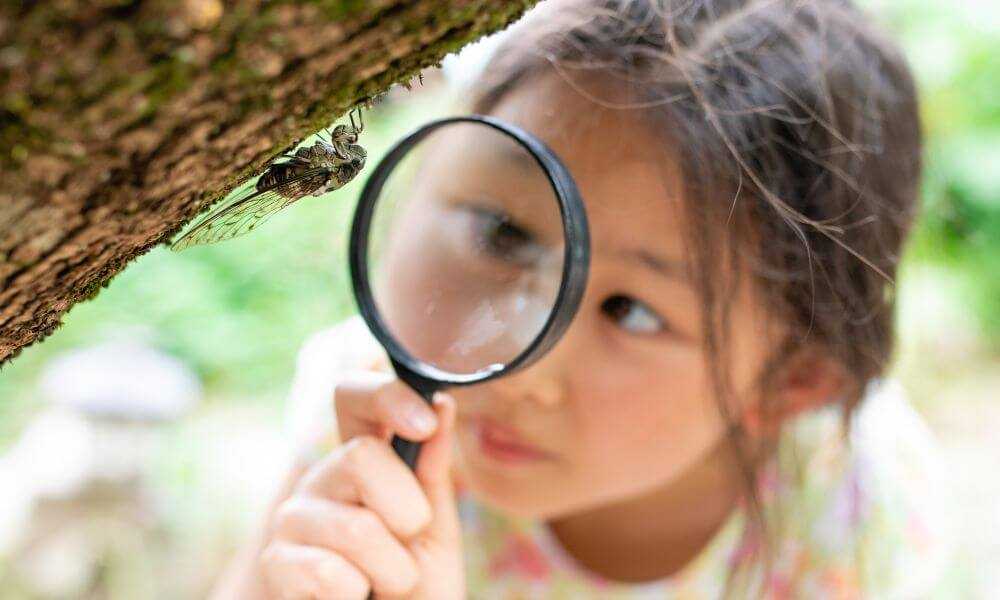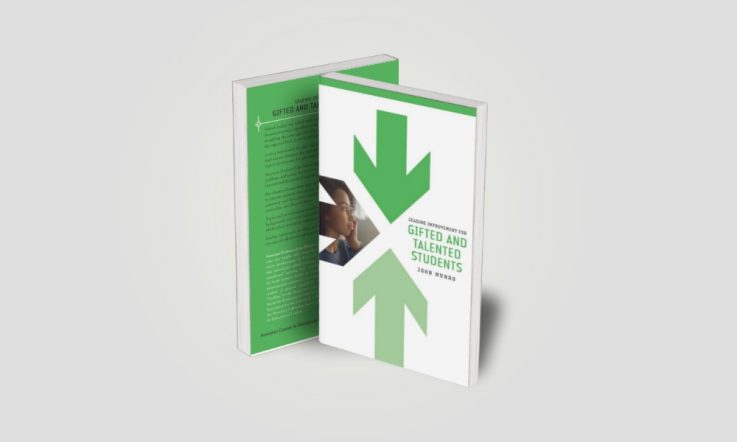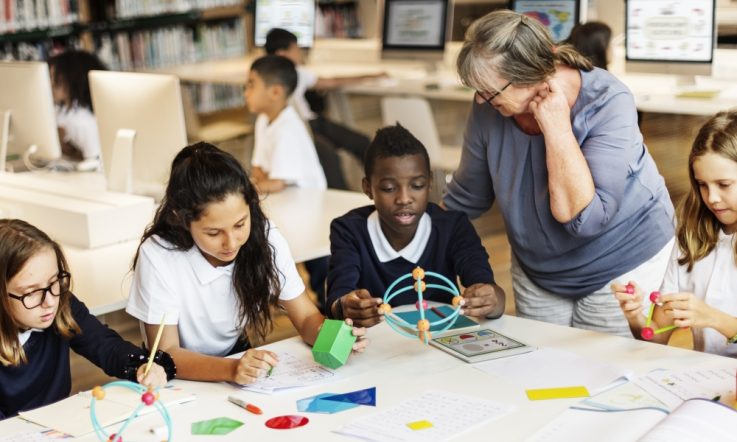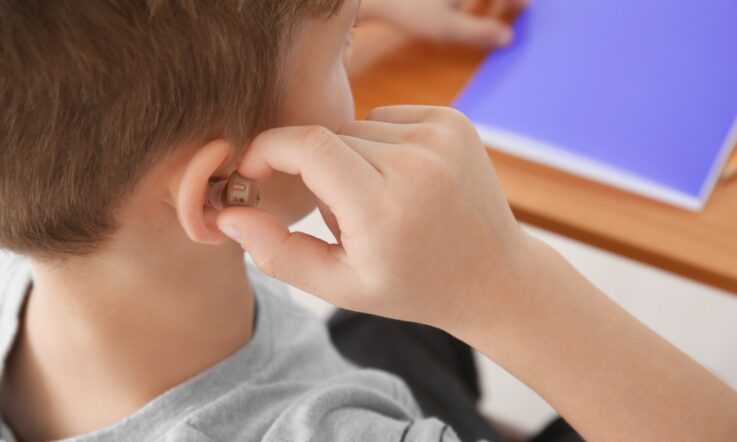‘Educational provision includes what students learn (the curriculum), how they will be taught (the pedagogy) and the culture in which they will be taught (the classroom climate or context). Gifted students benefit from the opportunity to interact with differentiated versions of each of these.’ Professor John Munro takes Teacher readers through these 3 areas of differentiation, and examples of what this could look like in the classroom.
This article is about how we can differentiate our educational provision for gifted students. At the outset, we need to recognise the purpose of the differentiation. These students learn differently from their regular learning peers. Learning is an interaction between student and the provision.
The differentiation is intended to match the provision with how they learn. To establish the match, the differentiation needs to begin with how gifted students learn.
Teachers use the curriculum to plan and provide teaching information that, they assume, their students will convert to the intended knowledge. Students use their existing knowledge to interpret this information, often initially in a literal way.
How gifted students interpret the teaching
Gifted students do more than interpret the teaching information. While they attend to it, they also make inferences about it. This leads them to stimulate additional aspects of their knowledge that were not mentioned. This knowledge can be in other domains. They make these inferences spontaneously and independently of the teaching. They synthesise these additional areas of knowledge with the knowledge triggered by the teaching.
As a result, they have more ideas in their understanding than what was in the teaching. Some of these ideas may be speculative or intuitive, because the students at that point haven’t had an opportunity to test them. Their understanding or knowledge has the form of an ‘intuitive theory of action’ about the information; they can take steps to test their theories. They ask questions or investigate them in other ways, for example, drawing images or acting them out.
In summary, gifted students can interpret the teaching at any time by using a richer, more elaborated and differentiated network of meanings and by thinking about the ideas using higher-level cognitive and metacognitive thinking. Their elaborated meaning networks help them interpret the information more comprehensively and faster. Their thinking routines allow them to generate higher-level, more sophisticated understanding. The differentiation is intended to target these ways of knowing and learning.
Curriculum, teaching and context: 3 areas for differentiation
Educational provision includes what students learn (the curriculum), how they will be taught (the pedagogy) and the culture in which they will be taught (the classroom climate or context). Gifted students benefit from the opportunity to interact with differentiated versions of each of these.
Differentiate the curriculum. The knowledge the student is expected to learn, that is, the curriculum or content, can be differentiated in various ways. A Nation Deceived: How Schools Hold Back America’s Brightest Students (Colangelo et al., 2004) describes 18 ways of accelerating these students through the curriculum.
One approach is to locate the students in a class that is learning higher-level content. A second approach involves modifying the curriculum in the regular classroom; the students learn higher-level content in their classroom. The second approach requires teachers to have a sound understanding of the curriculum and the ability to generate more complex, sophisticated versions of the topics they teach.
Classroom example
Consider a Grade 3 class learning about insects being taught their key features (3 body parts, 6 legs, antennae and an exoskeleton) and how they differ from other small animals such as spiders, which have 8 legs and 2 body parts). The gifted students in the class may learn about the shell-like features of the exoskeleton, how it assists the aerodynamics of flying insects, facilitates breathing, and how it is similar to features shared by other land and water animals.
Once the teacher has created the high-level versions of a topic, they can assemble a learning pathway for these students that takes account of how they learn. Access to information technology is useful here.
Differentiate the teaching. How they are taught, that is, the pedagogy, needs to be differentiated to match how these students learn. The regular teaching can be differentiated to include prompts and cues that invite students to think about the topic in more sophisticated ways – for example to infer, analyse, evaluate and synthesise big ideas.
It can be further differentiated to account for the multiple ways of being gifted. Nonverbally gifted students can be scaffolded to apply this thinking to pictorial information and mental images. Performance gifted students can use it by thinking in actions and embodiments about the ideas.
Classroom example
For example, the teaching information for the Grade 3 class learning about insects could include the following types of higher-order thinking questions:
- Inference questions: How might an insect’s exoskeleton help it survive in different environments, such as deserts or rainforests?
- Analyse questions: How do different types of exoskeletons help insects adapt to their environment?
- Evaluate questions: Some insects grow too big for their exoskeletons and make bigger ones. How might this be good and bad?
- Synthesise questions: What would you need to know to make a pesticide that could penetrate cockroaches’ exoskeletons?
Including these types of high-level questions is the first step in differentiating the teaching.
The second important step includes asking the students to make explicit and share their responses to the questions, for example: ‘An insect’s exoskeleton might protect it from environmental changes’. Their responses provide higher-level and unique understanding of the topic. Making them explicit helps the students to think about them further and to research them.
The teaching can scaffold a student to infer possibilities from their inferences, for example: If an insect’s exoskeleton protects it from environmental changes, might the substances that make exoskeletons be a way of dealing with the impact of climate change?
Teaching a topic usually begins with stimulating what students already know about it. You can ask questions that prompt students’ existing knowledge. You can identify those students who provide a richer existing knowledge and who can infer what they might learn about it. This information can assist teachers to differentiate the teaching.
The differentiation scaffolds gifted students to generate more complex interpretations. These are intuitive and may have ideas that ‘are possible’. It then gives them the opportunity to test or trial their intuitive understanding and to convert it to rational, validated or factual knowledge.
The second step in differentiating the teaching is often overlooked. It is frequently assumed that it is sufficient to simply include the higher-level thinking prompts in the teaching.
Differentiate the culture. The classroom climate and culture have a significant impact on how gifted students learn and whether they achieve talented outcomes. They influence how students interact both with the teaching and socially, how safe and supported they feel about sharing their gifted interpretations, and how motivated they are to learn.
Classroom cultures and climates that support gifted learning and talent development:
- Value and respect students’ existing knowledge and thinking and allow them to share their unusual interpretations.
- Use pre-assessment to identify students’ existing knowledge and skills and differentiate the curriculum and teaching accordingly.
- Permit students to learn in multiple ways, value thinking about possibilities and unusual perspectives, to learn both in ‘big jumps’ and stepwise.
- Encourage intellectual curiosity, original thinking, problem-solving,
- Support independent, self-directed learning, take direction and ownership of their learning.
- Communicate explicitly high expectations, criteria for success and value effort.
- Have students pursue knowledge in open-ended ways and to set personal goals.
- Foster and value intrinsic motivation.
Teachers and schools can use this set of characteristics to differentiate their classroom cultures. A range of additional characteristics of gifted-friendly cultures and climate are provided in my latest book Leading Improvement for Gifted and Talented Students.
Summary
Many approaches to differentiation focus only on the teaching and see it as an end in itself. They do not align the differentiation with how individual gifted students know and learn. Some believe that differentiating the teaching simply involves adding higher-order thinking skills. Some believe that locating a gifted student in a higher grade is sufficient to give access to a more advanced curriculum, without checking students’ existing knowledge or their ability to interact either with the curriculum as a gifted learner, or socially with the older peer group.
The approach to differentiation here is based on gifted learning. Gifted students are more likely to achieve talented outcomes when their interactions with the provision scaffolds them to form the most advanced, sophisticated interpretation of the teaching possible, and provides the opportunity to convert their intuitive understanding to validated knowledge.
Specialised ways of differentiating the curriculum, teaching and contexts for particular gifted cohorts, for example, twice-exceptional students, are detailed in Munro (2024).
Leading Improvement for Gifted and Talented Students, by Professor John Munro, is published by ACER Press and available to order via the link.
Stay tuned: In an upcoming School Improvement podcast, we sit down with John Munro to discuss leadership for the provision of gifted education - what it takes to develop a vision, putting together an action plan, upskilling teachers and collaborating with the wider community.
References
Colangelo, N., Assouline, S. G., & Gross, M. U. (2004). A Nation Deceived: How Schools Hold Back America's Brightest Students. The Templeton National Report on Acceleration. Volume 1. Connie Belin & Jacqueline N. Blank International Center for Gifted Education and Talent Development (NJ1). https://eric.ed.gov/?id=ED535137
Munro, J. (2024). Leading Improvement for Gifted and Talented Students. ACER Press. https://shop.acer.org/leading-improvement-for-gifted-and-talented-students.html
This article by Professor John Munro includes examples of what differentiation may look like in a Grade 3 class learning about insects.
With a group of colleagues, choose a topic you’re planning to teach. What might a ‘high-level version’ of this topic look like?
Look at the 4 types of higher-order thinking questions in the article and have a go at writing your own, for your upcoming topic.
Don’t forget to plan in the second important step identified by Professor Munro –‘asking the students to make explicit and share their responses to the questions’.



